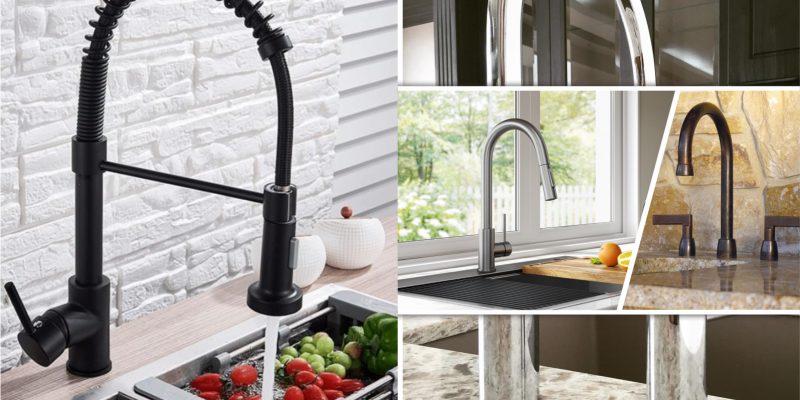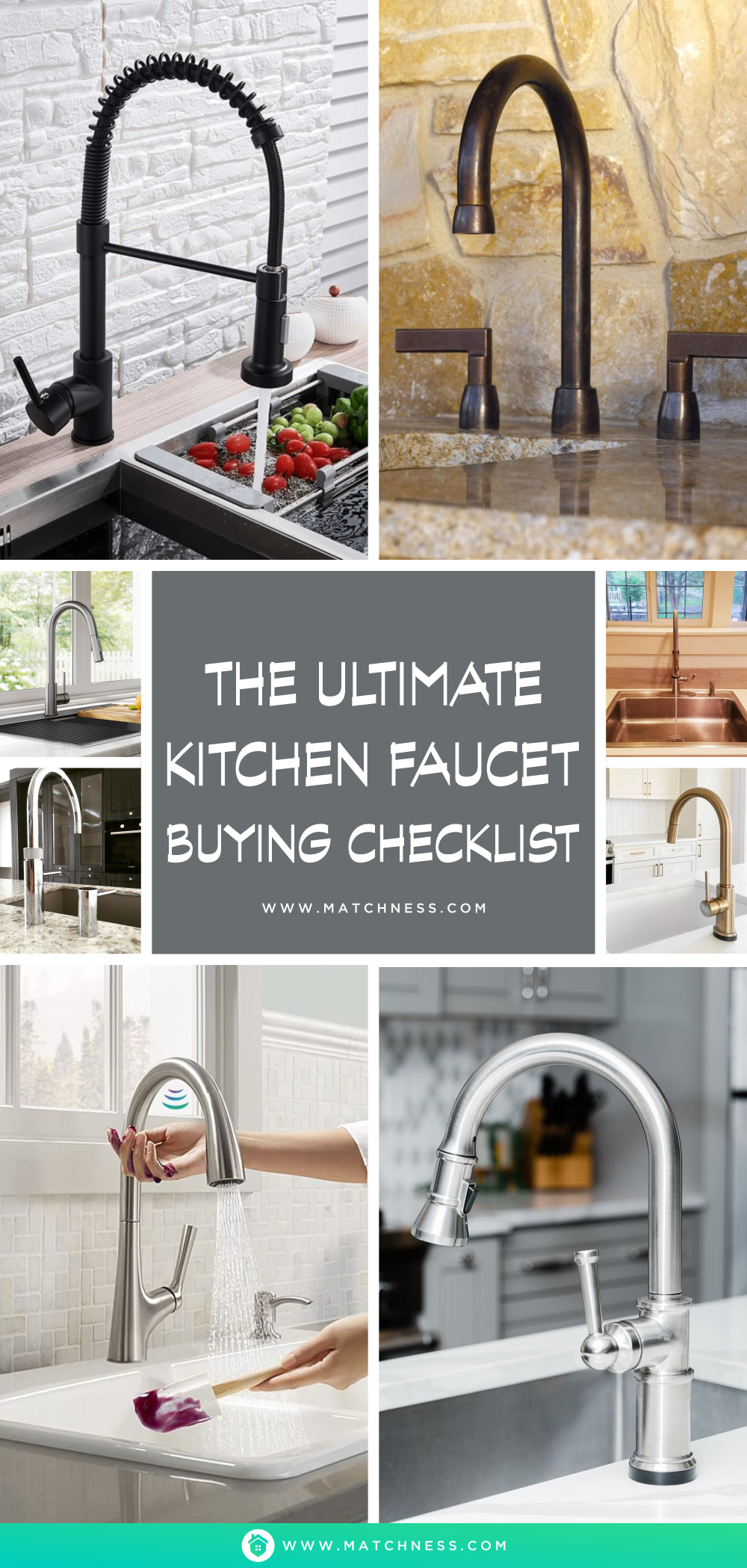Due to the high level of use, kitchen faucets can wear out and develop issues such as mineral deposit build-up, rust, and leaks. While it’s possible to replace parts of the faucet to extend its life, repeated repairs may indicate the need for a new faucet. Additionally, some people choose to replace their faucet for aesthetic reasons or to upgrade to a new style. To ensure a successful purchase, it’s important to research faucet products and consider various features and factors. In this article, we will explore how to buy a kitchen faucet.
Things to Consider Before Replacing Your Kitchen Faucet
If you notice a leak, non-stop drip, or mineral buildup on your kitchen faucet, it’s important to investigate the cause of the problem to determine whether to repair or replace the fixture. In some cases, replacing the O-ring or cartridge can fix a leak and is a less expensive option than replacing the entire faucet. However, if the faucet continues to leak despite replacing these parts, it’s better to replace the fixture. Mineral buildup is often caused by hard water in the home, and replacing the faucet won’t solve the underlying issue. To prevent mineral buildup on a new faucet, consider installing a water softener before replacing the old fixture.
If you want your kitchen faucet to last for a long time, approximately 15 to 20 years, proper maintenance and care are necessary. To make the best decision, it’s crucial to understand the different product features and factors that can affect your choice, including the finish, sink configuration, and flow rate.
Flow Rate (GPM)
When searching for a new kitchen faucet, it’s important to consider the flow rate of the fixture. Flow rate, measured in gallons per minute (GPM), refers to the amount of water that flows through the faucet within a minute. In the past, older faucets had a higher average flow rate of about 2 GPM, but with water conservation efforts, most faucets now have a flow rate of 1.8 GPM or less.
It’s essential to check your local building codes to determine if there are flow rate limits in your area before buying a new faucet. Some areas require the installation of a low-flow faucet with a maximum flow rate of 1.5 GPM. Although low-flow faucets take longer to fill up pots or buckets, they can help reduce your water bill.
Sink Configuration
The location where you will install the faucet is almost as important as the faucet itself. If you are installing a new sink, you can select the appropriate sink configuration while searching for a faucet. However, if you already have a sink, you must determine the sink’s configuration before choosing a new faucet.
Sinks may have one hole for both the hot and cold water line, or they can have over four different holes for the cold water line, hot water line, faucet bracket, soap dispenser, or an independent hole for a pull-out sprayer. To find a suitable faucet, examine your sink to determine how many pre-drilled holes it has. Additionally, keep in mind that many faucets come with covers or faceplates that can be used to hide extra pre-drilled holes in the sink. It is not recommended to drill additional holes in the sink to accommodate a faucet if the sink does not have enough holes.
Finish
When searching for a new faucet to match the current style or improve the kitchen’s aesthetic, there are a variety of faucet finishes to consider. Chrome is a popular choice because it is easy to clean and complements the sink’s color, making it a good option for most kitchen aesthetics. Stainless steel is often used in refrigerators, ovens, dishwashers, and even toasters, making it a good choice if you want a finish that matches your appliances. For those who want a standout kitchen faucet, premium finishes such as nickel, platinum, pewter, or matte black may be preferred.
Kitchen Faucet Types
Faucet types vary not only in finish but also in style, with different numbers of handles and varying spout sizes and shapes. There are several options available, such as single-handle, double-handle, touchless, stationary spouts, pull-down spouts, pull-out spouts, straight spouts, and gooseneck spouts.
- Single-handle faucets: Single-handle faucets are advantageous in that they occupy less space than double-handle faucets and usually require fewer pre-drilled holes in the sink. However, adjusting the flow and temperature of the water with a single handle faucet can be more challenging than with a double-handle faucet.

You can apply this single handle faucet to a kitchen sink. It’s great for turning on the water with one hand, making it easy to access water quickly Single Handle Faucet from @dxvluxury
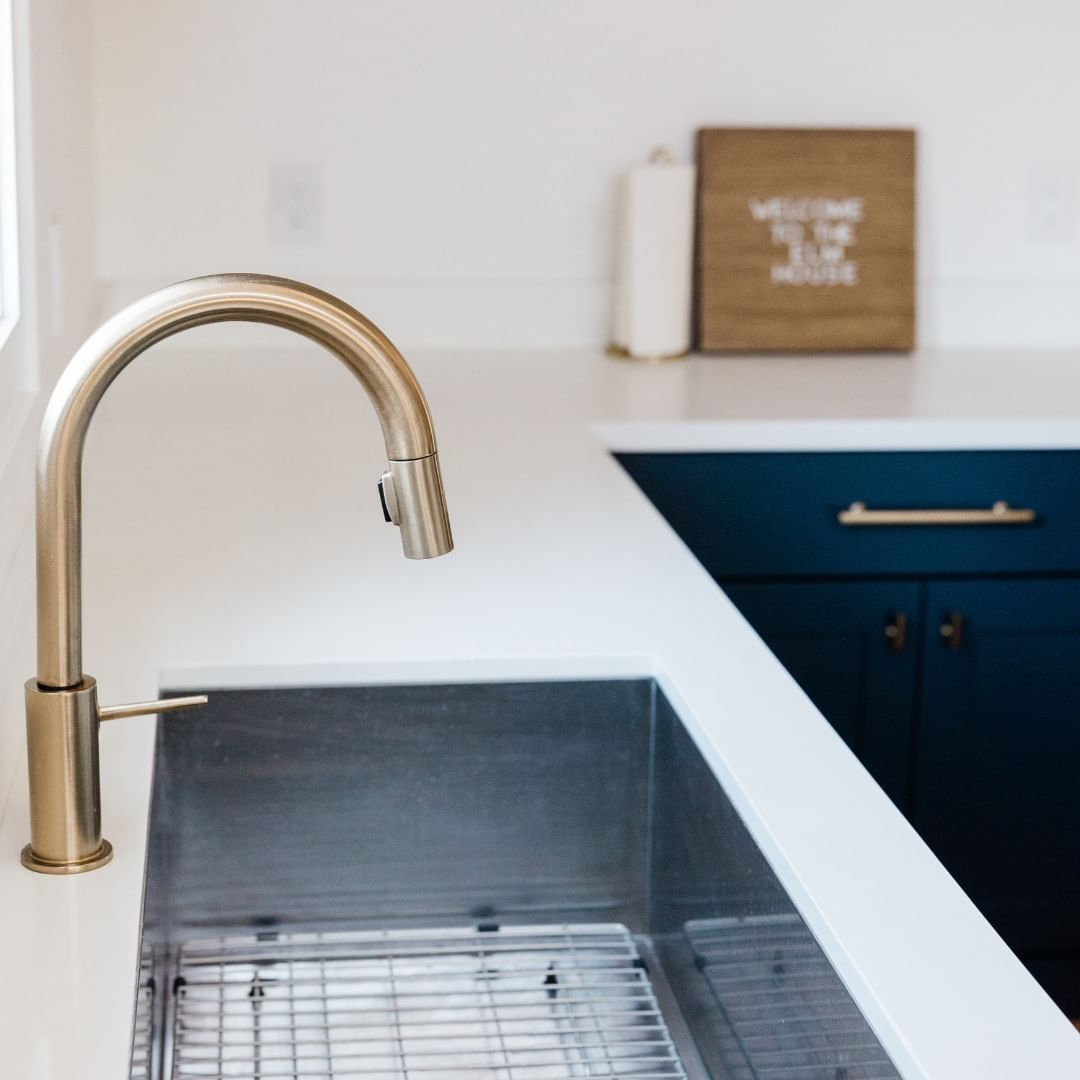
These single handle faucets adjusting the water flow and temperature with a single handle faucet can be more challenging than with a double handle faucet. Great for turning on the water with one hand, making it easy to access water quickly. Gold Single Handle Designs from @annickroccahomes
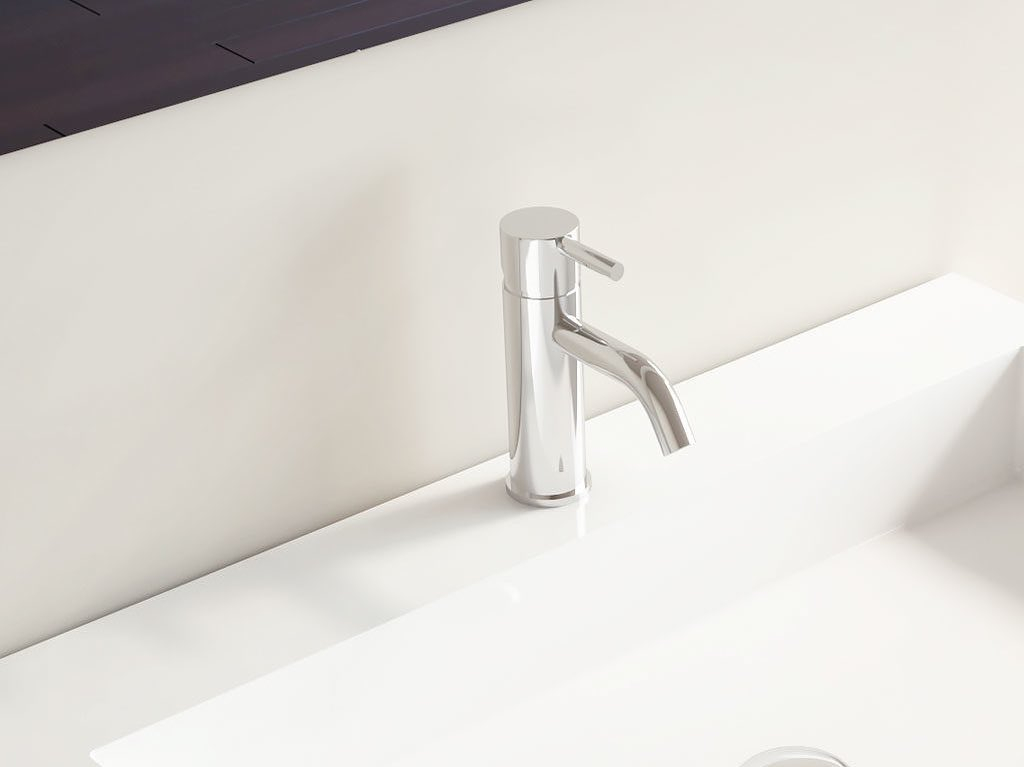
Opting to use a single faucet of this type is good for tight spaces. This sleek design is able to balance the look of your kitchen. The downside to single handle faucets is that it can be difficult to get the water temperature or flow just right. Small Single Handle from @badeloftusa
- Double-handle faucets: Double-handle faucets offer better control over the flow and water temperature as they allow the user to adjust the hot and cold water separately. However, they require more space compared to single-handle faucets and aren’t compatible with sink configurations that have only one pre-drilled hole.
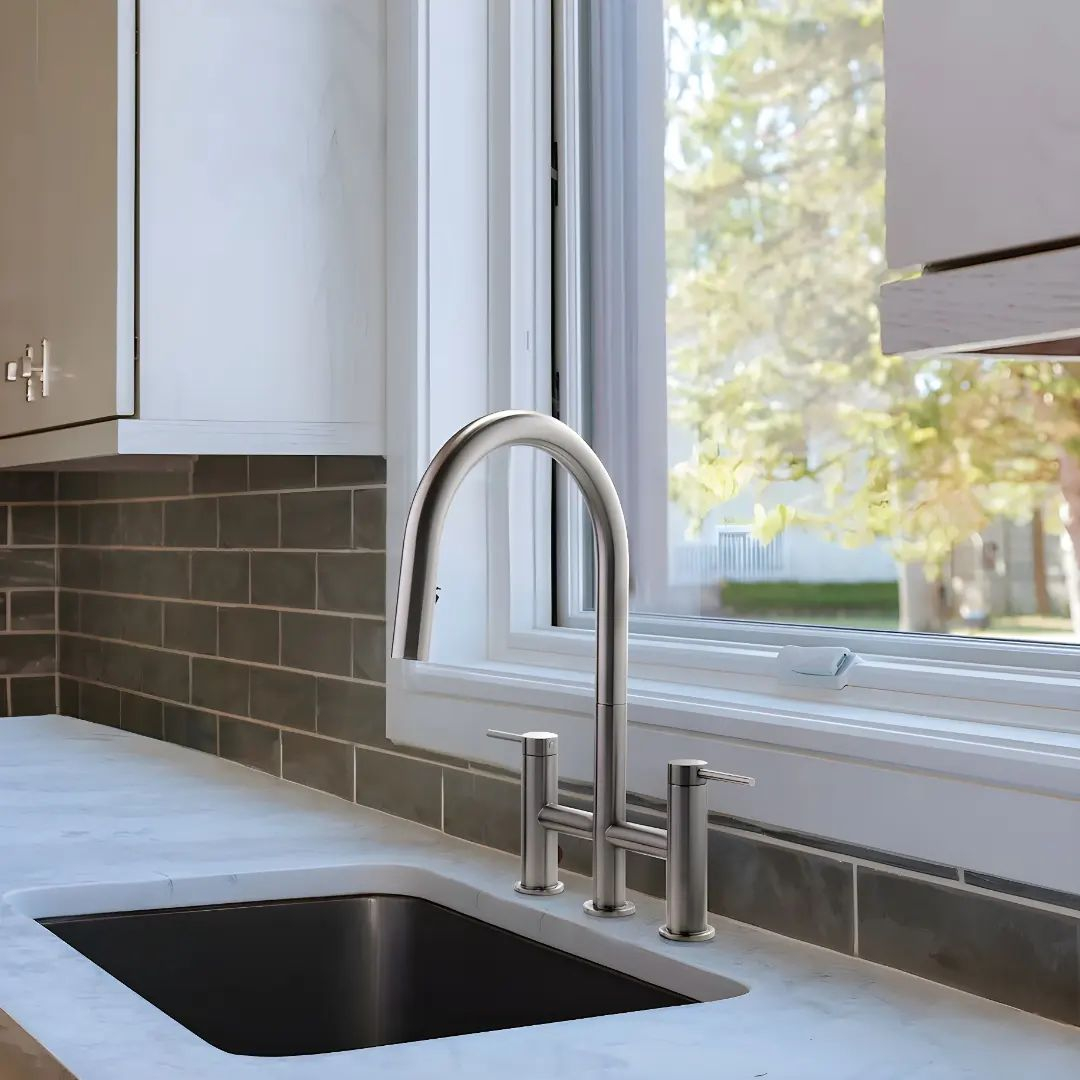
The double handle faucet has separate handles for cold and hot water flow. This makes controlling the water temperature and pressure much more accurate. Double-Handle Faucets from @thecoloursofindonesia
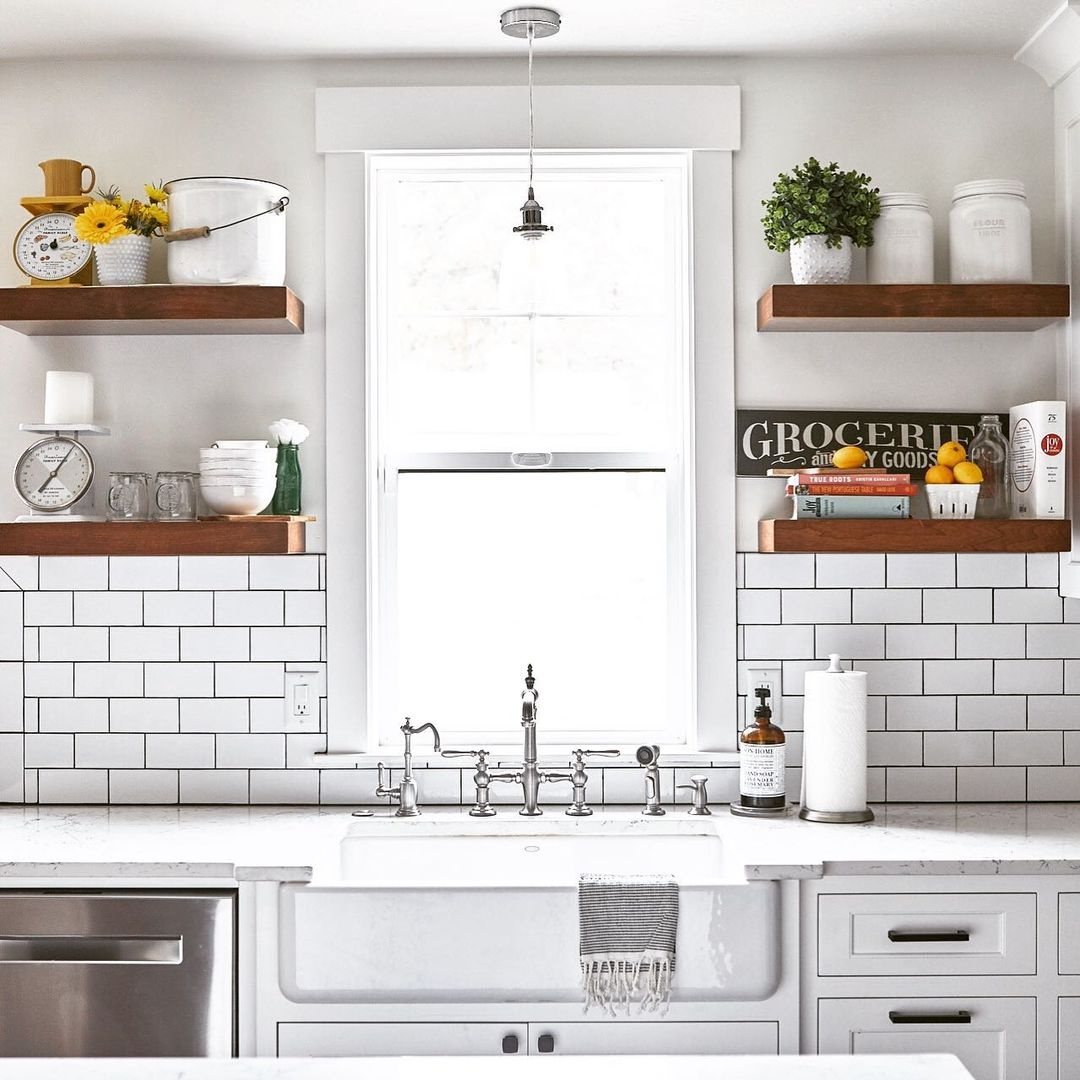
You can try using a double handle faucet to create different water temperatures. Pairing with this family home style sink will also balance the look of your kitchen. Farmhouse Double Handle Faucet from @theoregonfarmhouse
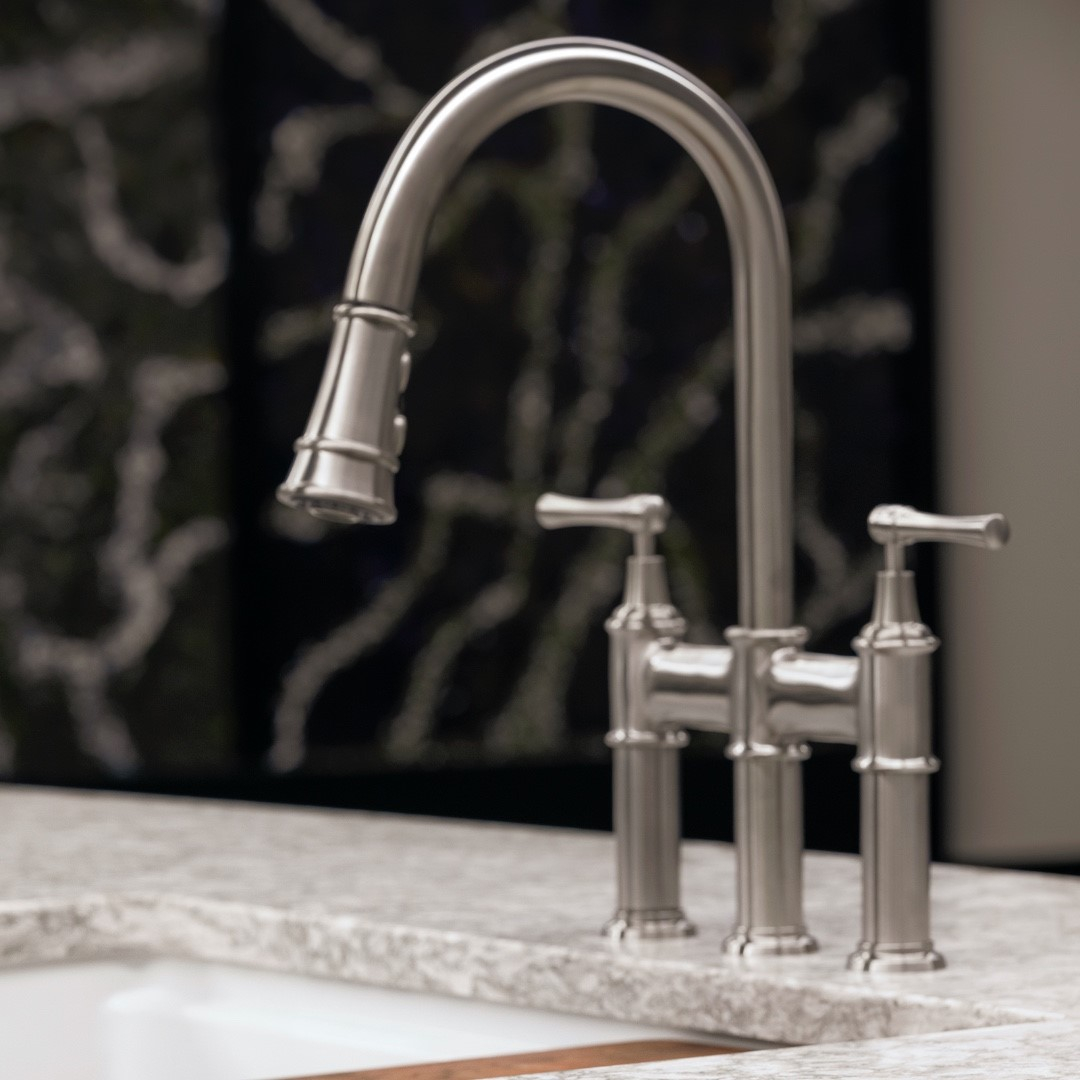
This modern kitchen has two faucet handles that will circulate water at different temperatures. In addition, this type of faucet also has the disadvantage that it requires more space than a single handle faucet. Double Handle Faucet from @select_surfaces_mn
- Touchless faucets: Touchless faucets eliminate the need for users to turn a tap or lift a lever to activate the water flow, which is particularly helpful when hands are dirty. While this feature is convenient, touchless faucets are often more expensive than other options.
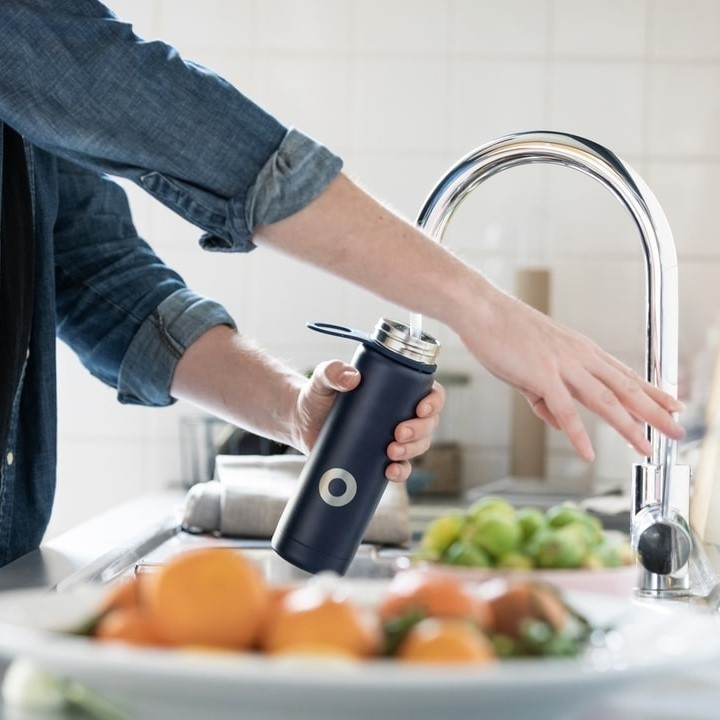
Touchless faucets can be turned on by motion and have only one handle to control the water temperature. This faucet has a sensor that will help you turn on the faucet easily. Touchless faucets from @creativepartnerstyle
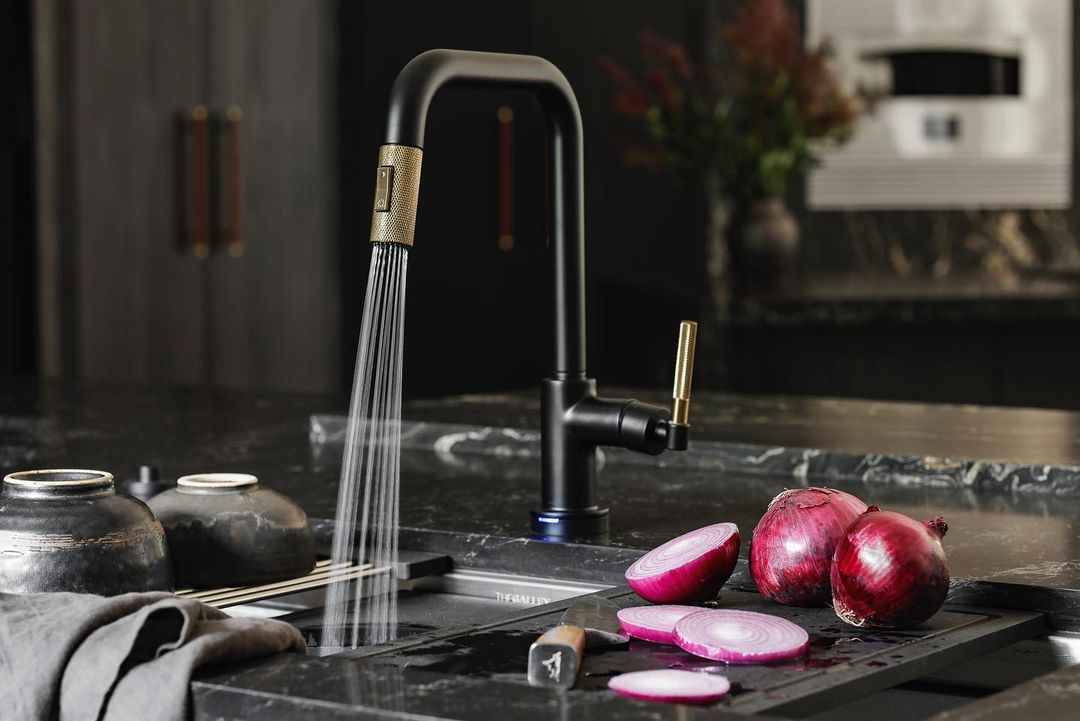
This minimalistic contactless faucet reduces mess as you don’t have to touch the faucet when your hands are dirty. While this feature is convenient, touchless faucets are often more expensive than other options. Minimalist Touchless Faucets from @bluebell_kitchens

This touchless faucet has a sleek design that keeps sinks simple. They reduce mess because you don’t have to touch the faucet when your hands are dirty. However, these high-tech faucets are usually more expensive. Touchless Faucets Kitchen from @amandageorgeinteriors
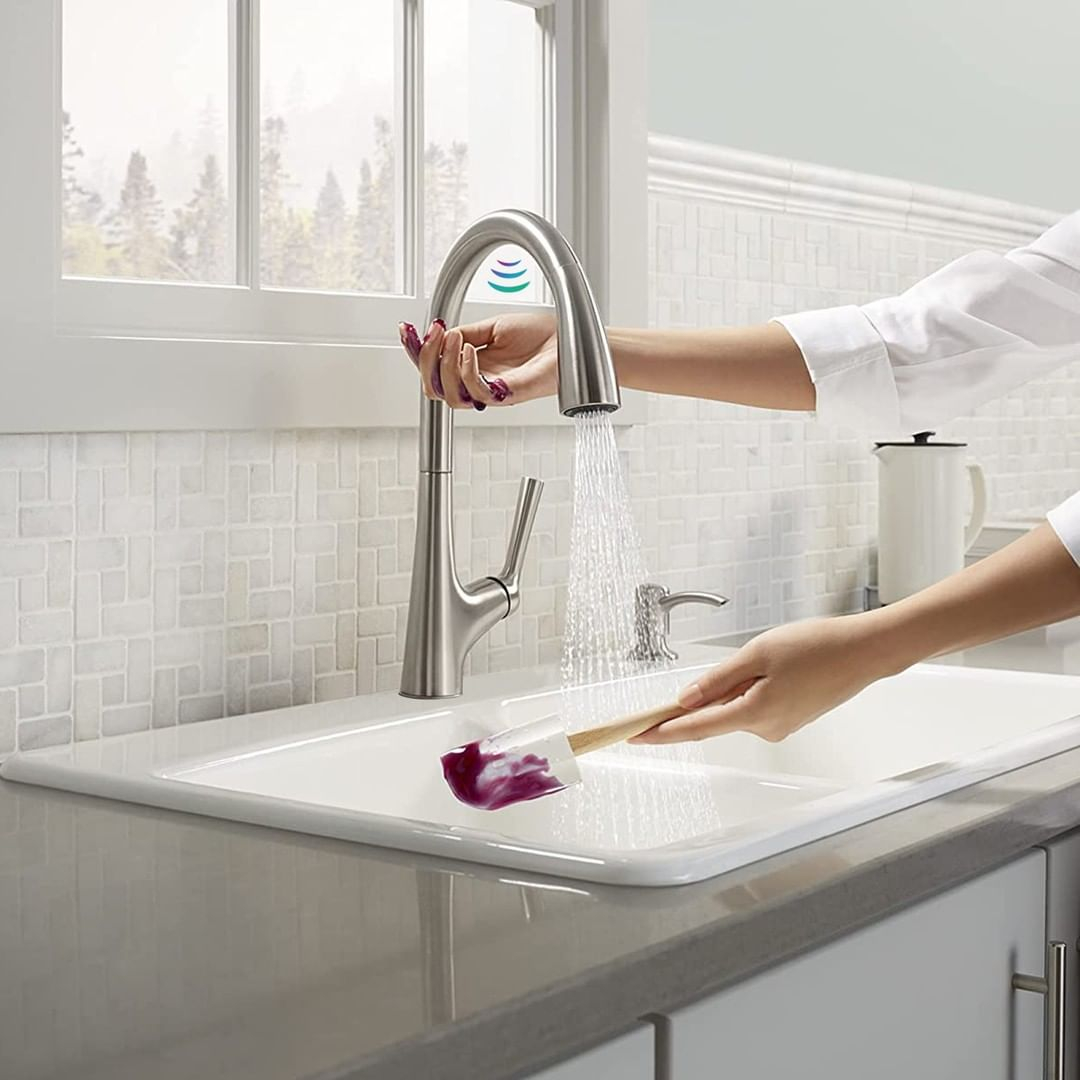
This touchless faucet works by a tiny sensor that activates the flow of water when the hand or pot is swung in front of it, making preparation even easier. It’s the perfect solution when you’ve recently handled raw meat or other ingredients that might leave bacteria on your hands. Kitchen Faucet from @galleria.idn
- Stationary spout faucets: Faucets with stationary spouts can swivel horizontally, but they do not have a sprayer that can be pulled down or out. Instead, these types of faucets may come without a sprayer, or they may have a separate sprayer that is mounted to the side of the faucet.
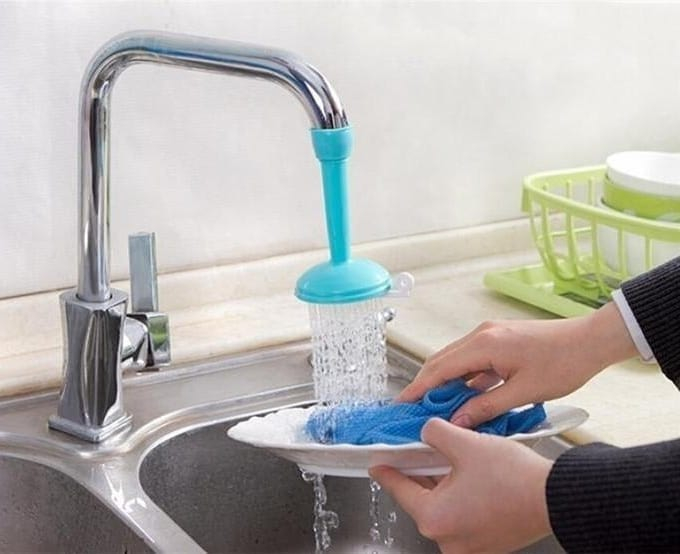
Opting for this stationary faucet offers the simplest form of faucet available. This is great for small sinks that don’t require an accessible or moveable spout. Stationary Spout Faucets Kitchen from @vandana_marketing_silchar
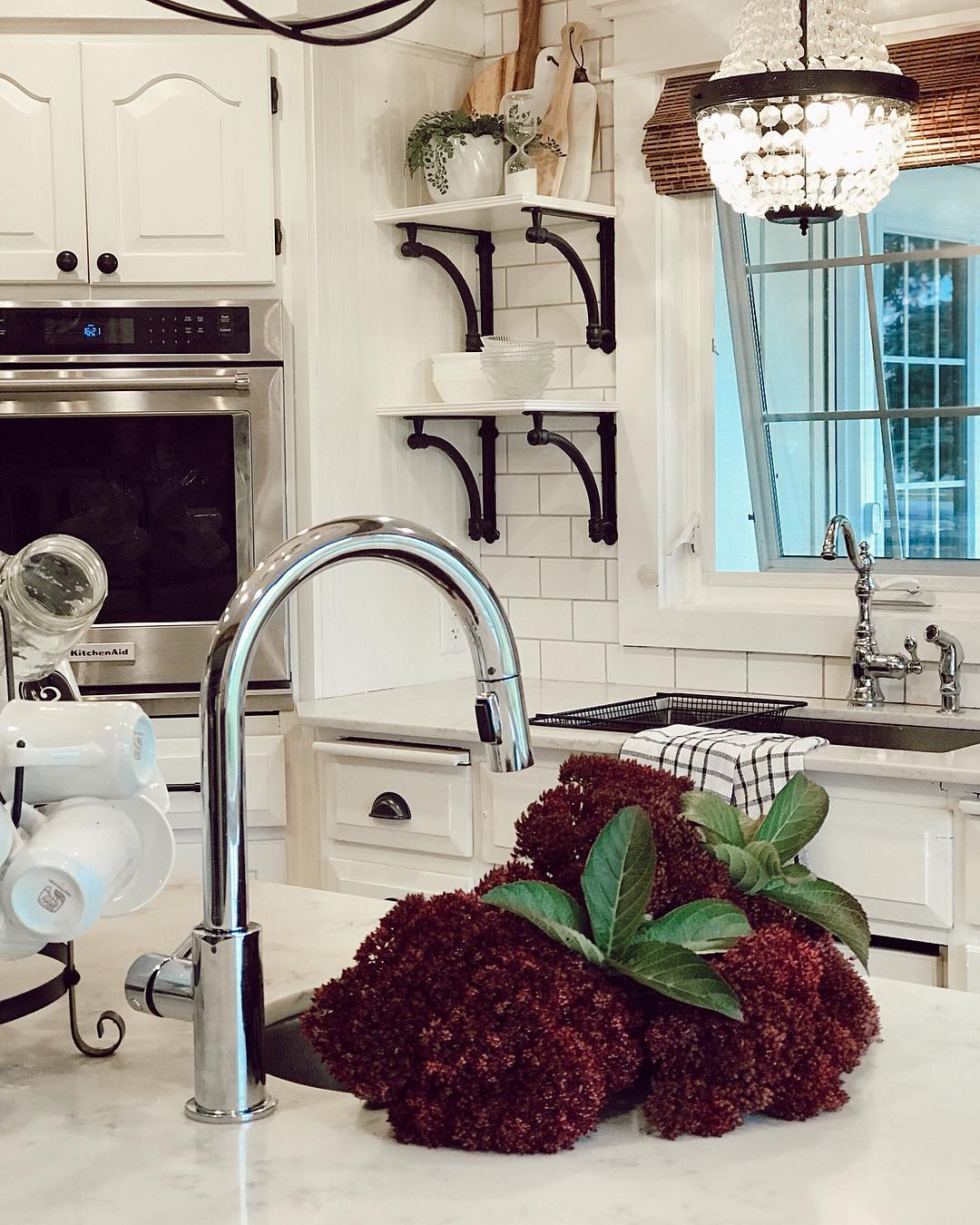
Stationary faucets do not move, rotate or have any additional features. This cool idea is perfect for you to try on your small kitchen design. Stationary Faucet from @bethanythislittleestate
- Pull-down spout faucets: Faucets with a pull-down spout have a sprayer built into the fixture that can be pulled down from the faucet head on a hose. When the sprayer function isn’t being used, the spout acts as a stationary spout. After use, the hose retracts back into the faucet.
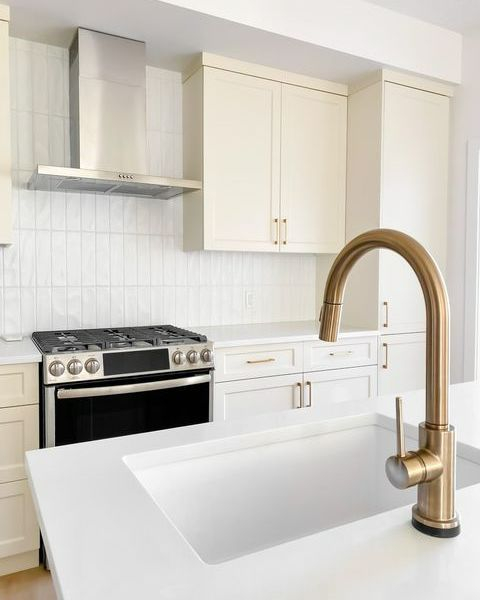
With an elegant swan neck spout, it’s pretty common, and for good reason. Opting for a pull-out faucet makes it easy to drain or squirt into every corner of the sink. Single Handle Pull-Down Kitchen from @deltafaucetcan
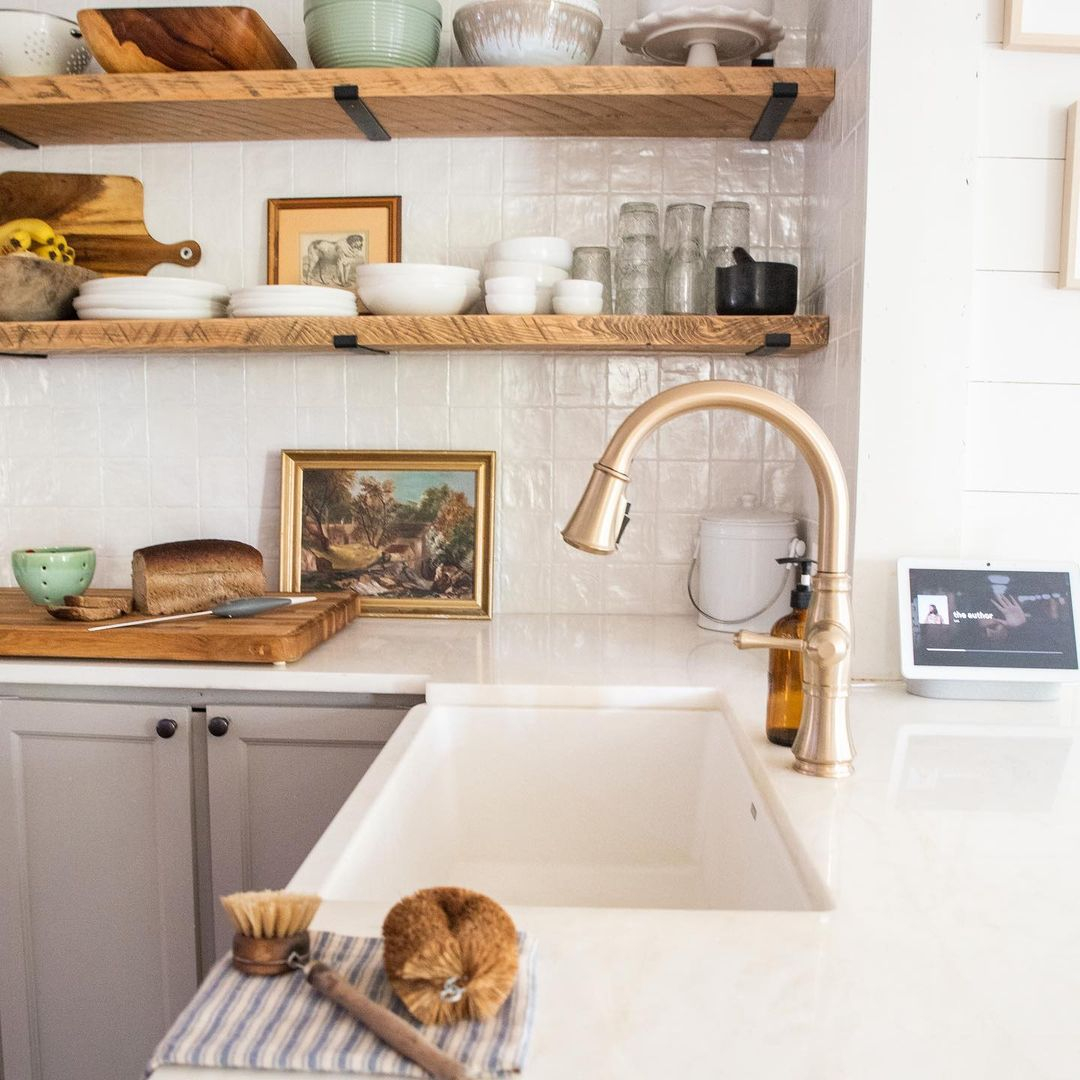
You can try choosing a pull-out faucet that makes it easy to drain or spray into every corner of the sink. After use, the hose is pulled back into the faucet. Handle Pulldown Kitchen Faucet from @deltafaucetcan
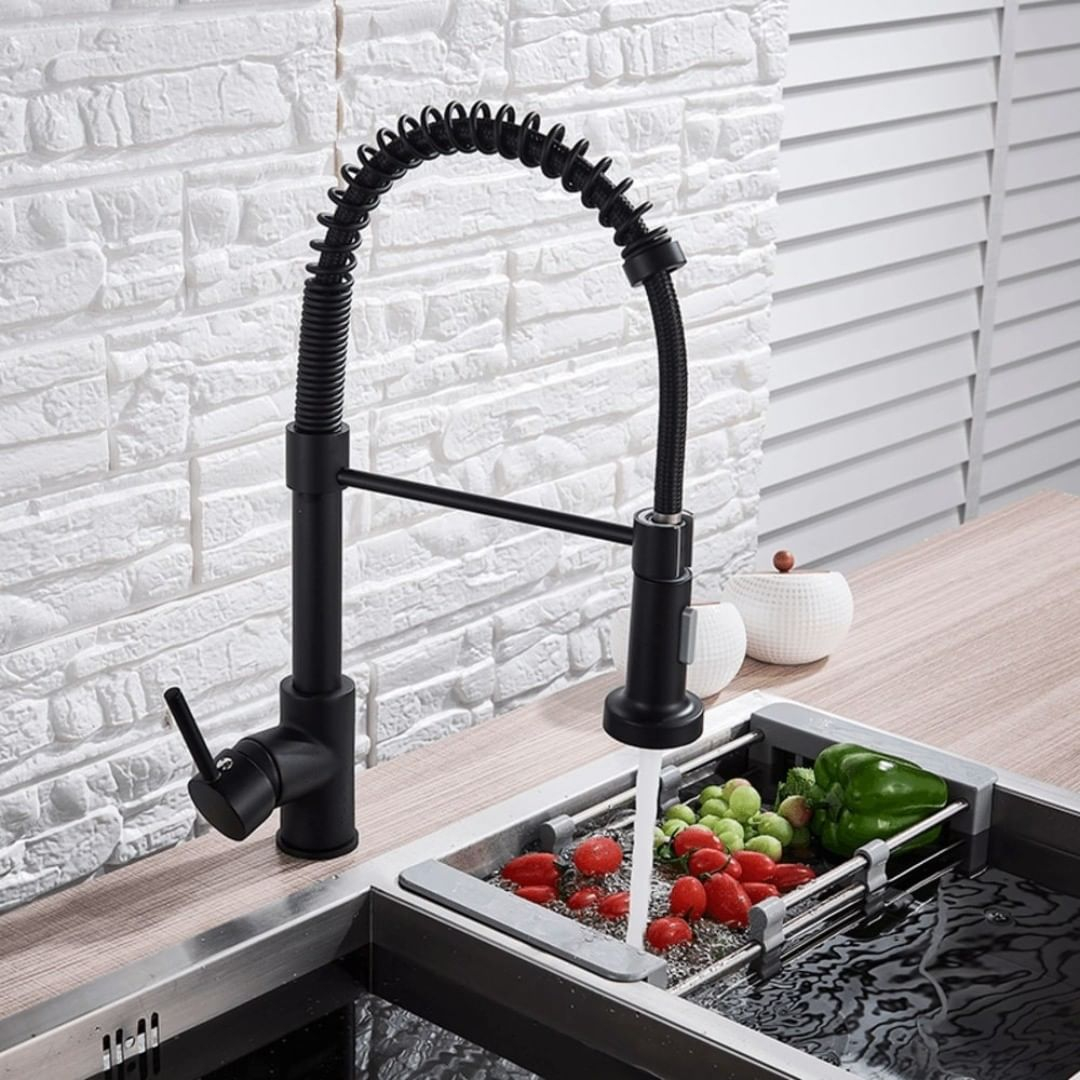
This faucet has a fixed head that can be pulled out in the down position, providing some flexibility of use, but lacks the range of motion that a pull-out faucet can provide. This faucet is able to make it easier for you to do activities on your faucet. Black Handle Pulldown Faucet from @signaturefaucets
- Pull-out spout faucets: Pull-out spout faucets are comparable to pull-down spout faucets, but they have a longer hose and shorter spouts. Like pull-down spout faucets, they have a built-in sprayer that can be pulled out from the faucet head, or it can be used as a stationary faucet when the sprayer isn’t needed.
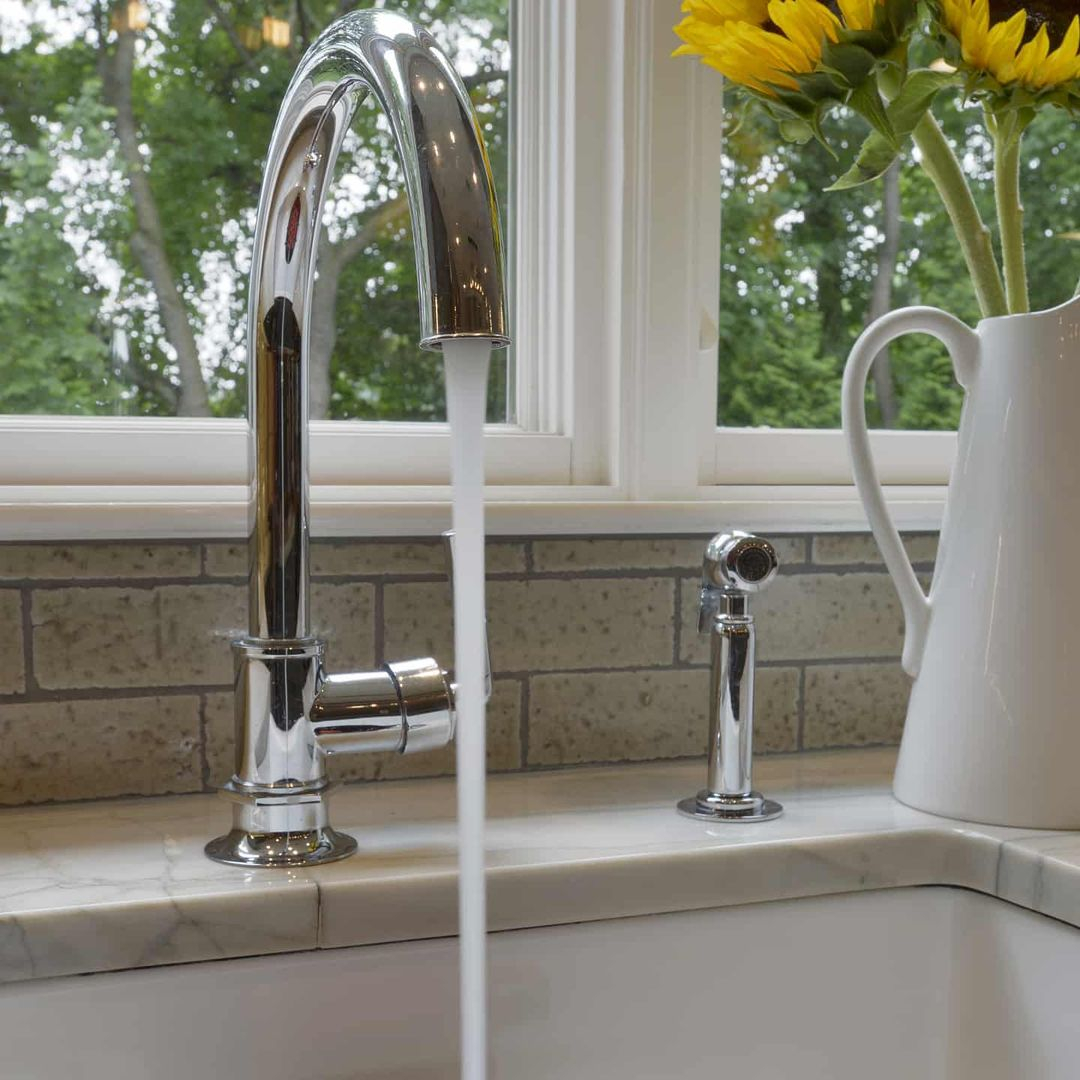
Pull-out faucets expand your space and allow for a range of motion for removable heads, which usually offer typical flow or spray options. he can even reach across the table to fill a large pot. which may not fit easily in the sink. Pull-Out Spout Faucets from @randyokane_ckd
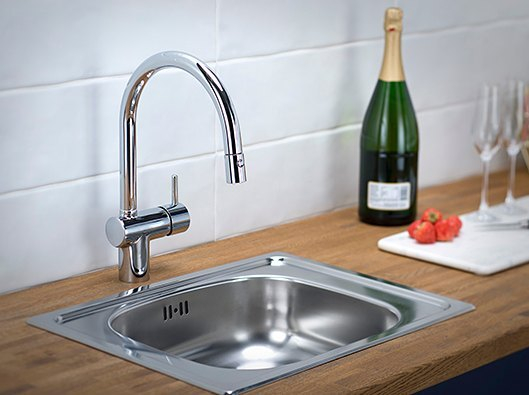
This pull-out faucet can reach across the table to fill large pots. Using this type of faucet will make it easier for you to do work in the kitchen. Mora Pullout kitchen from @mora_armatur
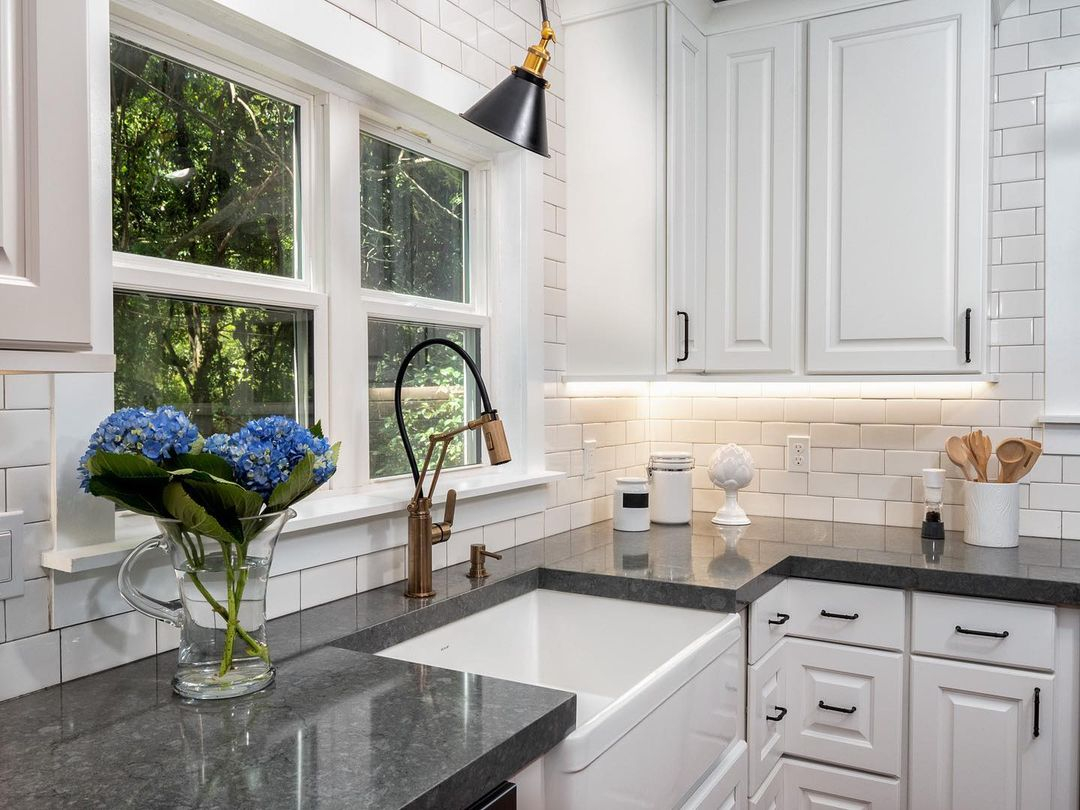
This famrhouse kitchen is equipped with a pull-out faucet. Can reach all areas of the sink that are difficult to reach. It’s suitable for you to try now. Farmhouse Pull-Out Spout Faucets from @sarah.cain.design
- Straight spout faucets: Faucets with straight spouts have a horizontal extension from the faucet body. Their length varies, making them suitable for either small single sink configurations or larger double sink setups.
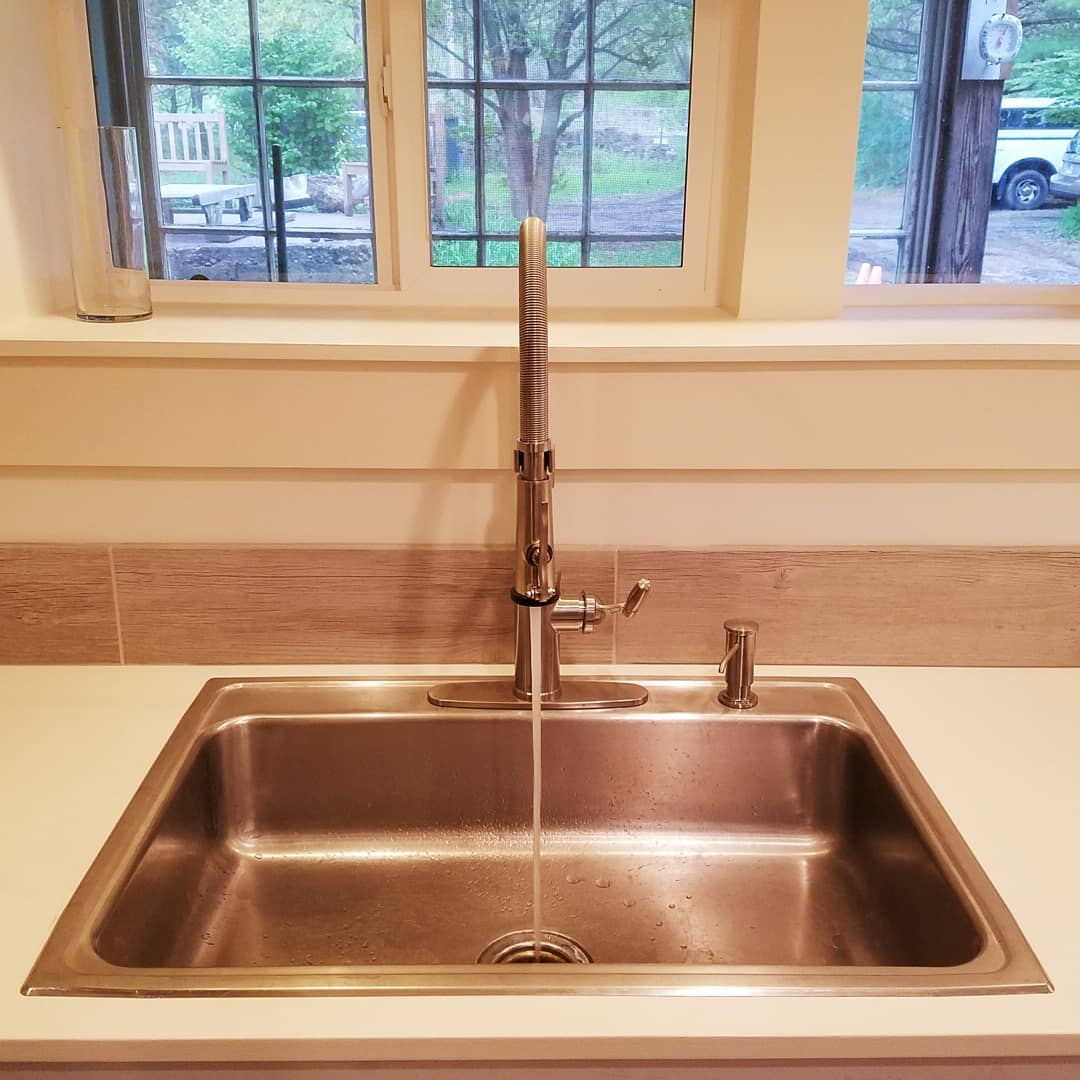
The straight spout of this faucet complements any modern interior. They vary in length, making them suitable for small single-body or larger double-body configurations. This faucet will save you money without sacrificing performance. Kitchen Faucet from @scofieldartdesign
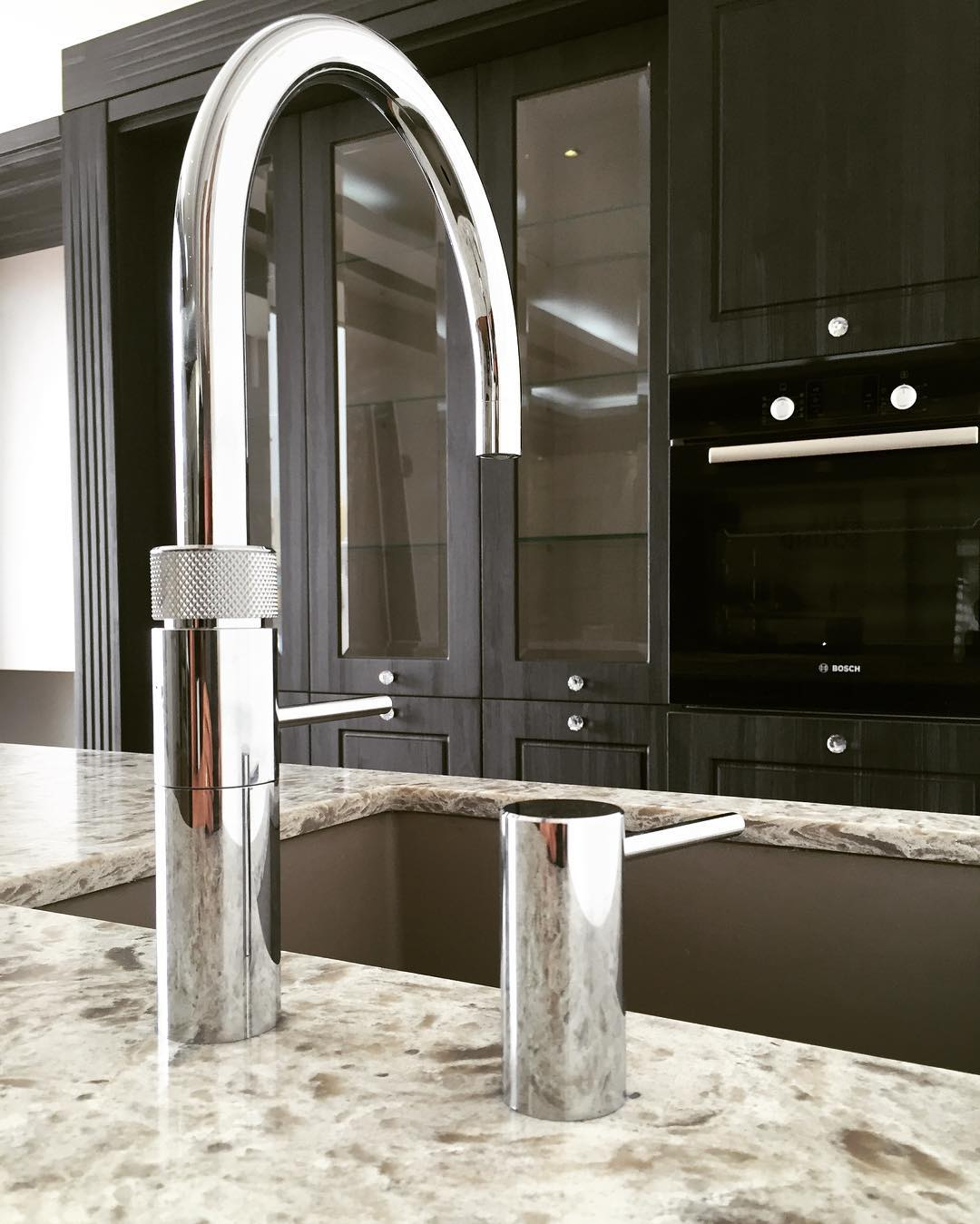
Faucets with a straight spout have horizontal extension. This faucet has different shapes and styles because it has an attractive appearance for your home kitchen design. Straight Spout Faucets from @quookeruae
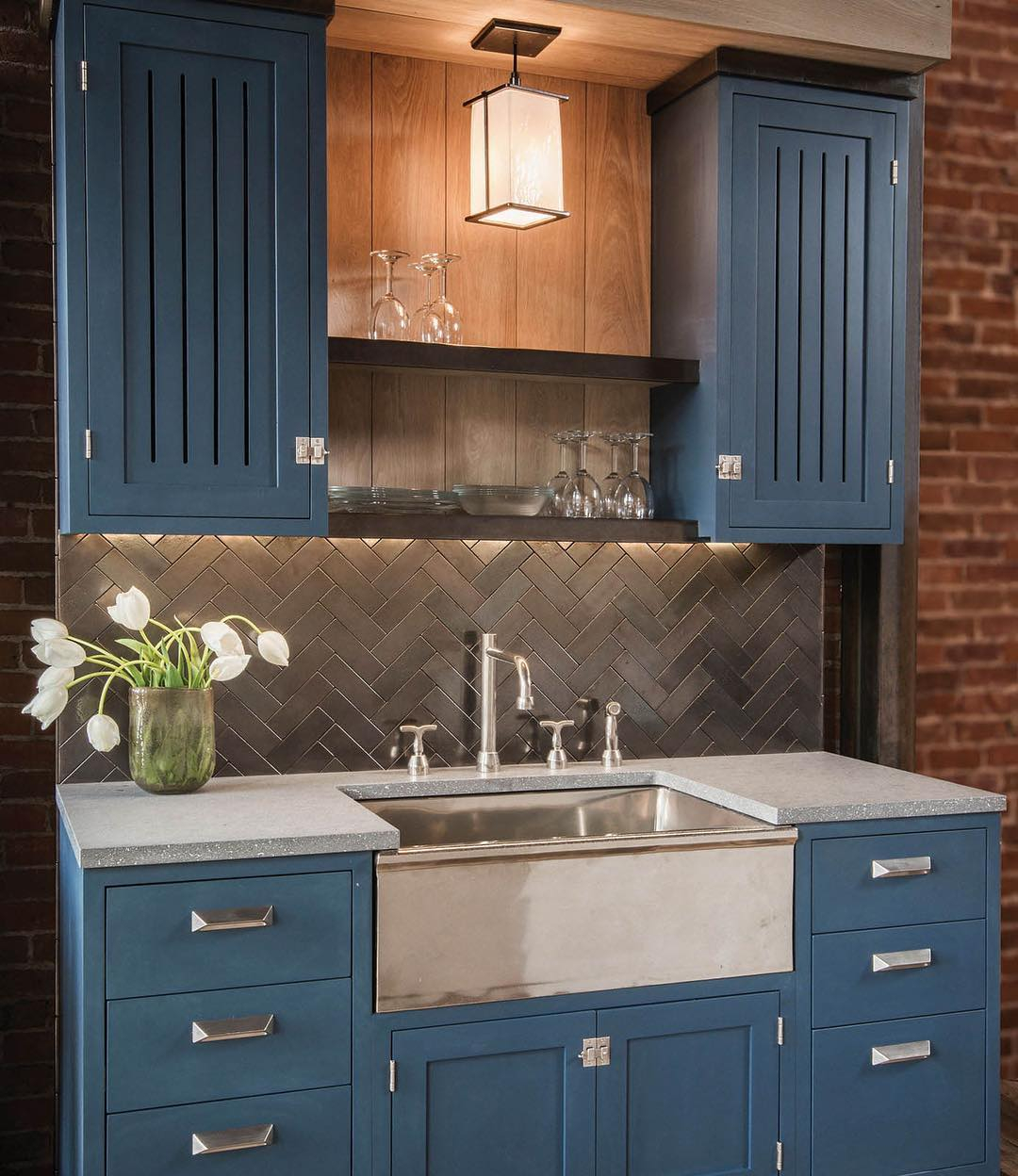
Try straight spout faucets which come in a variety of lengths. This faucet is suitable for small single body or larger double body configurations. Straight Spout Faucets Kitchen from @doordesignlv
- Gooseneck spout faucets: Faucets with gooseneck spouts feature a vertical extension from the body of the faucet that curves downward, resembling the neck of a goose. While these faucets have a unique look, they require more clearance above the sink due to their high arc design. If you have low-hanging cabinets, this style may not be the best option for your kitchen.

This swan neck faucet has high curvature, very similar to the original goose neck shape. This faucet is vertical to the sink, reaches up then curves back into the sink. Gooseneck spout faucets from @rockymountainhardware
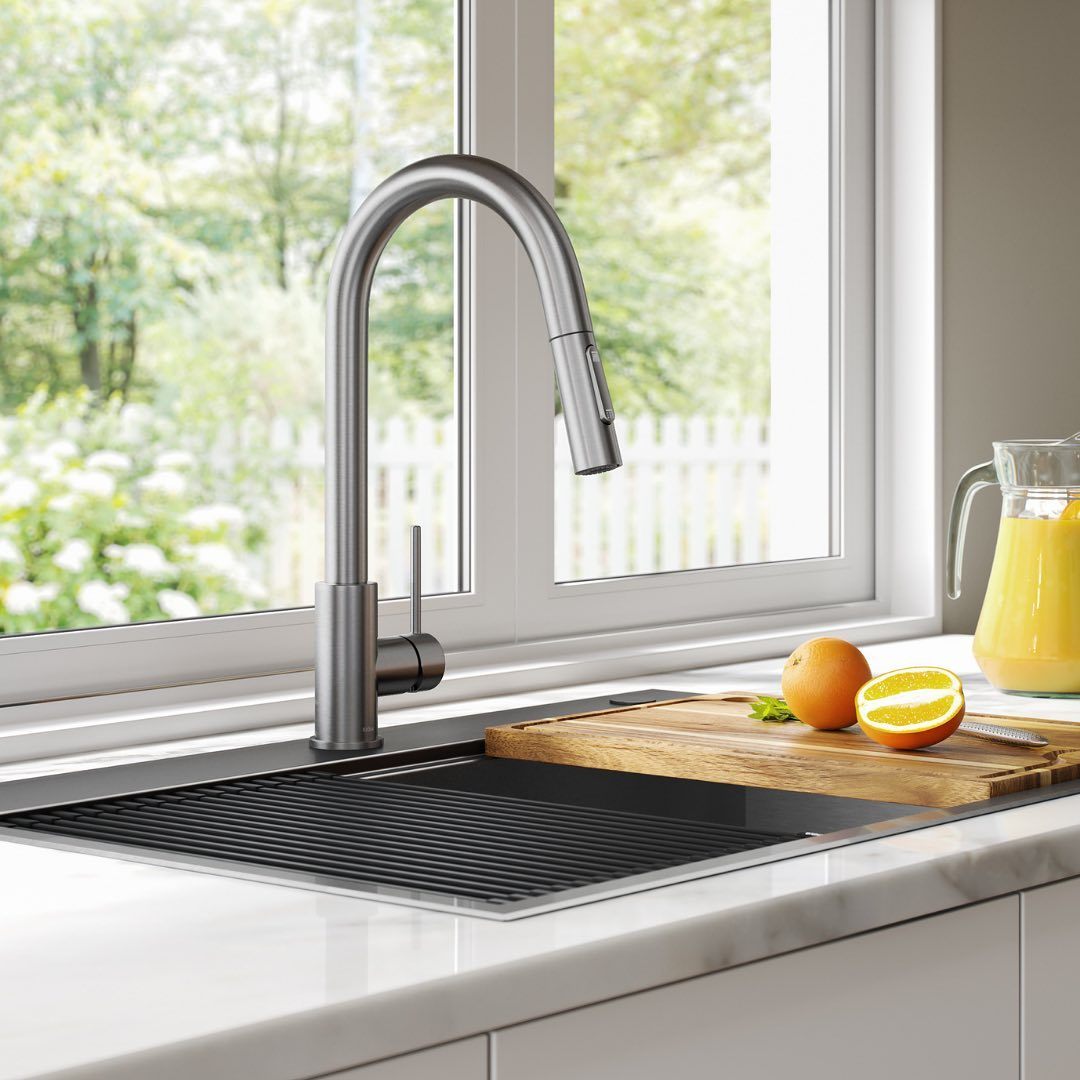
Applying this kitchen gooseneck faucet requires more space above the sink due to its high arc design. If you have low-hanging cabinets, this style may not be the best choice for your kitchen. Gooseneck Faucets from @kraususa
Cost
The cost of installing a new kitchen faucet can differ substantially, based on whether you choose to do it yourself or hire a professional plumber. If you possess the necessary skills and tools to set up the kitchen faucet, your only expense would be purchasing the faucet, which can range from approximately $50 to $2,000.
If you lack the skills or tools to install a faucet yourself and are looking to minimize installation costs, it is suggested that you consider a basic stationary straight spout faucet with a chrome or stainless steel finish.


